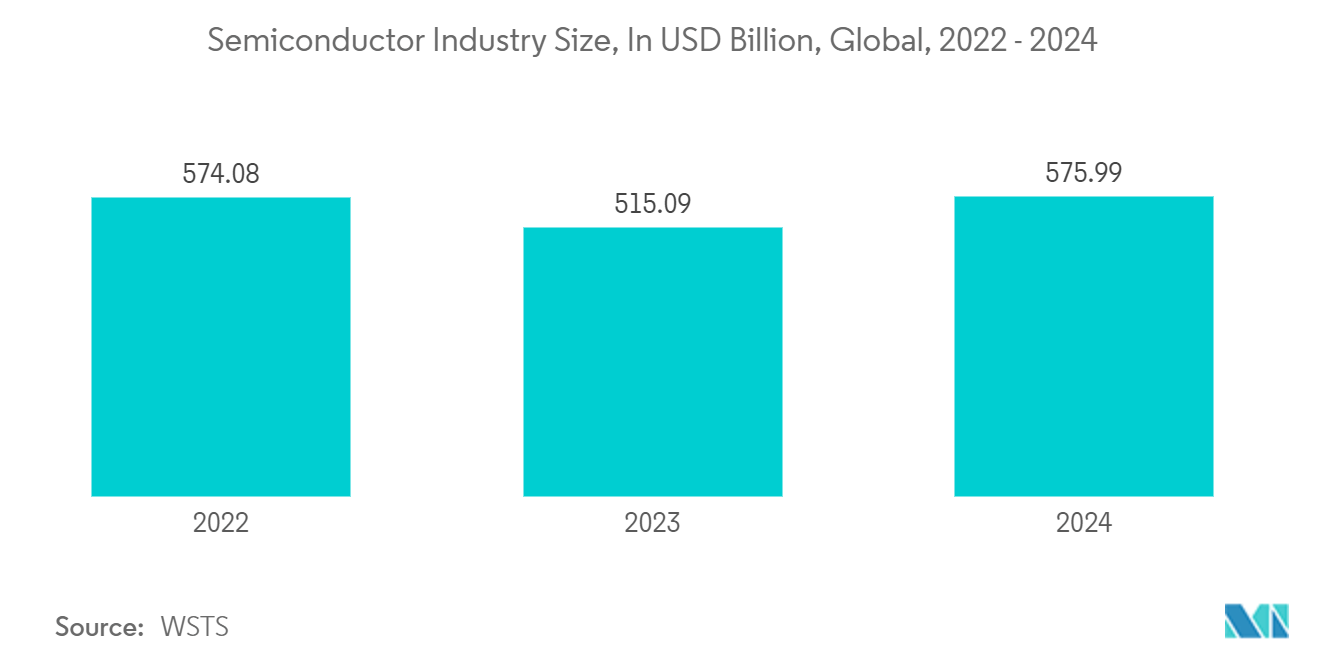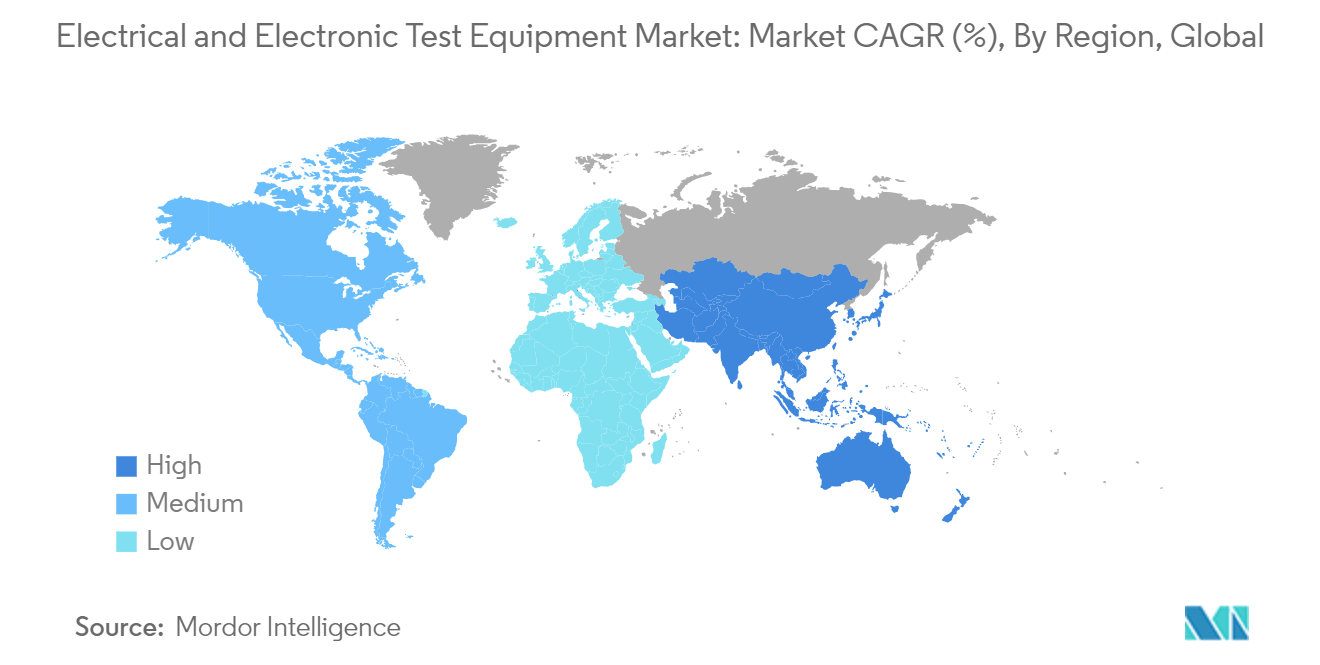Market Trends of Electrical Test Equipment Industry
Semiconductors and Computing are Expected to be the Largest End-user Industry
- The adoption of automated test equipment (ATE) by semiconductor manufacturing firms to improve performance operational speed and reduce costs of semiconductor devices is anticipated to have a favorable impact on market growth.
- Semiconductor automated test equipment (ATE) is capable of testing a diverse array of electronic devices and systems, ranging from essential components such as resistors, capacitors, and inductors to complex integrated circuits (ICs), printed circuit boards (PCBs), and fully assembled electronic systems. ATE is extensively employed in the electronic manufacturing sector to examine electronic components and systems post-fabrication. Given the rising semiconductor industry, the demand for ATE is anticipated to escalate considerably.
- The semiconductor industry is experiencing a rapid expansion, with semiconductors serving as the fundamental components of contemporary technology. According to SIA, the global sales of semiconductors amounted to USD 124.5 billion in Q2 2023, marking a 4.7% rise from Q1 2023. Additionally, it foresees a 56% surge in the worldwide demand for semiconductor manufacturing capacity by 2030. Such futuristic developments are expected to create a significant need for electronic testing equipment.
- The market is witnessing an increase in demand for rapid and significant improvements in chip power performance, efficiency, cost, area, and time to market due to the emergence of technologies such as the IoT, Big Data, and artificial intelligence (AI). This shift in customer demands and preferences is expected to be one of the critical drivers for the growth of the semiconductor testing equipment market.
- SIA officially supported the WSTS Spring 2023 worldwide semiconductor sales forecast in June 2023. The forecast estimated annual global sales to amount to USD 515.1 billion in 2023, a decrease from the 2022 sales total of USD 574.1 billion. In 2024, global sales are expected to reach USD 576.0 billion, the highest-ever total in the industry. The escalating demand for chips, coupled with favorable government initiatives and rising demand for semiconductor chips, has led to an increase in semiconductor equipment spending, indicating a growing interest in establishing new foundries worldwide. Such increasing chip production is expected to drive the demand for electronic testing equipment.

Asia-Pacific is Expected to Dominate the Market
- The Asia-Pacific region significantly dominates the semiconductor and electronics industry, primarily driven by the extensive manufacturing bases in China, Japan, South Korea, and India, which have also been rapidly maturing in the final assembly of the electronics industry.
- Large contractors, such as Foxconn Technology Group and Megatron Asia Pacific Ltd, are in the process of setting up plants in India. According to IBEF, India is committed to reaching USD 300 billion worth of electronics manufacturing and exports of USD 120 billion by 2025-26. In addition, the Union Budget 2023-24 allocated INR 16,549 crore (USD 2 billion) for the Ministry of Electronics and Information Technology, which is about 40% more elevated annually.
- The region's increasing testing and inspection activities are expected to create a considerable demand for electrical test equipment. Previously, most regional firms conducted their testing and certification operations in-house. However, due to China's Compulsory Certification regulations, greater emphasis is now placed on the need for strict regulatory standards. This has led to increased outsourcing of testing services, thereby increasing the demand for test equipment among testing services companies.
- Apart from the consumer electronics industry, low-cost carriers dominate the region. Thus, the majority of the inspection and service activities are outsourced. Due to this, Singapore has emerged as a regional hub for maintenance and inspection services. Allied players operating from Singapore have maintained dominance in the region for over two decades. However, countries like Indonesia, Vietnam, and Thailand are challenging the country's dominance.
- Additionally, the region has been a base for multiple key players, including Yokogawa (Japan), Advantest Corp (Japan), Anritsu Corporation (Japan), Rigol Technologies (China), and ScienceTech Technologies (India). These companies, along with various other companies in the region, are continuously involved in product innovations, providing solutions across various industry applications.
- In August 2022, Advantest Corp. collaborated with the Rohde & Schwarz RTP high-performance oscilloscope for mass exhibition evaluation of high-speed SoC testers. In line with this partnership, the company aims to enhance the quality of its products to meet the latest requirements. Such initiatives by the regional companies are expected to promote market growth.
- Furthermore, multiple infrastructure projects, such as executing high voltage lines and power generation plants, are anticipated to drive the region's demand for electrical testing equipment. For instance, in August 2022, China's State Grid plans to fund more than CNY 150 billion (USD 22 billion) in UHV power transmission lines in the second half of 2022. The construction of 8 new UHV projects is expected to connect China's far western regions, where solar, wind, and hydropower plants are primarily located, to its major cities, further driving market growth.


